Published: 22 June 2024
Northern Ireland
As I prepare this blog post, it's a week before we leave for Northern Ireland. As usual, a lot of planning has gone into this post, which you can see on my Wanderlog Plan ![]() . I've also plotted out the Northern Ireland part of the trip on this map.
. I've also plotted out the Northern Ireland part of the trip on this map.
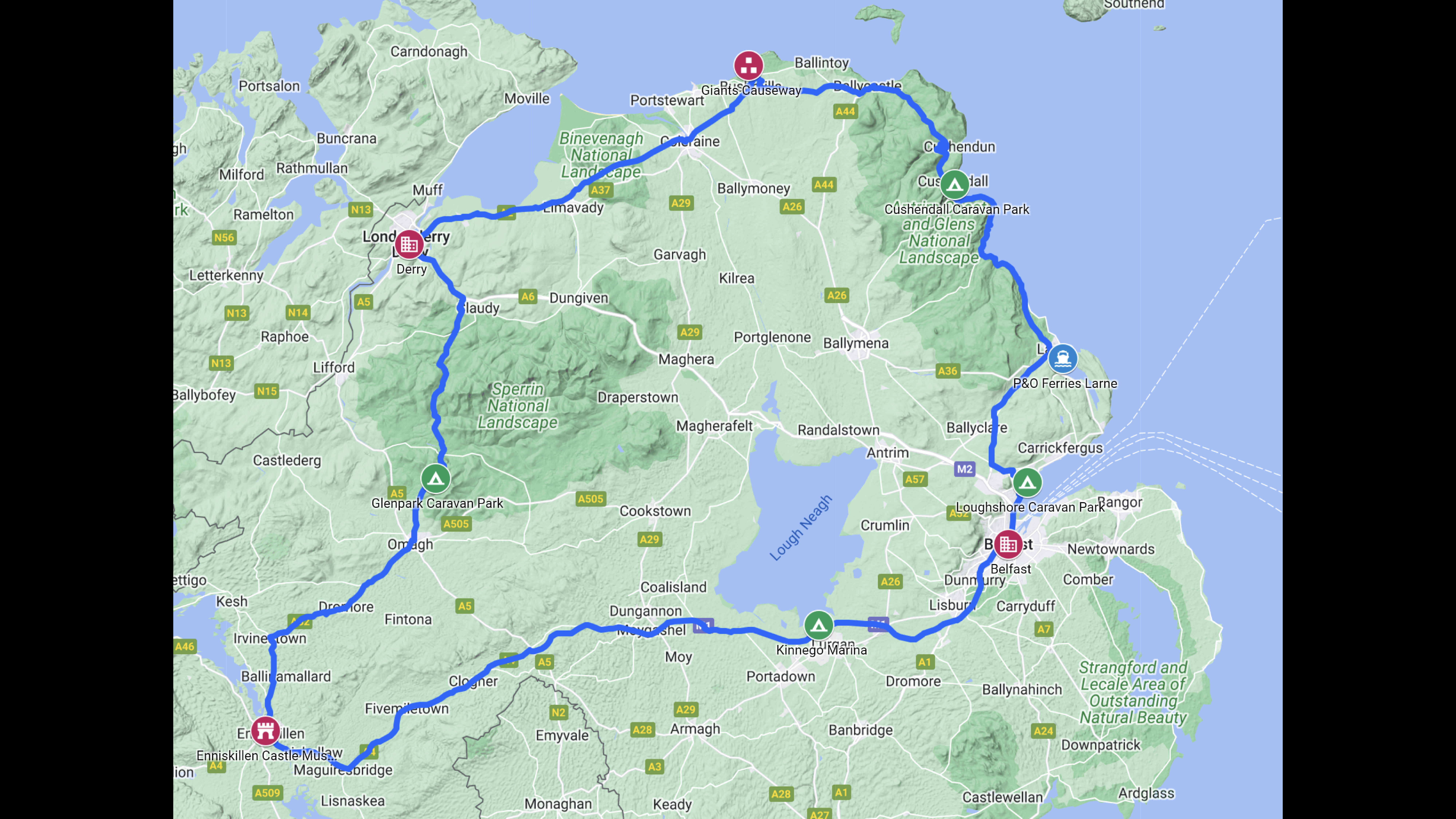
In writing this blog, I'm hoping to focus on a few key themes:
- Accessibility - particularly for wheelchair users and those with assistance dogs
- Inequality - this is in relation to The Troubles but I suspect it may feature in other areas too
- Natural beauty - obviously, I'm going to have my camera with me the whole time and will be aiming to capture some of the amazing sights and scenes as we travel.
Travelling
Our journey to Northern Ireland began in Scotland. We took the P & O ferry from Cairnryan to Larne. When booking, you could either select 'wheelchair user' or 'assistance dog' but not both... so I went with letting them know I'm a wheelchair user. I figured that Liggy needs less planning, in terms of getting us boarded and safely up to a passenger deck.
There are competing priorities when loading a wheelchair user in a motorhome onto a ferry. They obviously need to get all the vehicles as closely packed as possible, so that everyone will fit. That means that passengers generally have to squeeze between the vehicles to get to the nearest stairwell. Wheelchairs need space and I will need to use the lift, and I think there is only one lift. This offers up some challenges. Our previous Calmac experiences have been largely positive. It will be interesting to see how P & O compare, as a much bigger company.
How did P & O do?
The whole ferry experience ran very smoothly and we found it to be completely accessible. At check-in, they already had it on my file that I'm a wheelchair user and they told me to put my hazard lights on when I went through security. This tells them I need to be in the disabled lane for boarding.
Security was very easy. At Cairnryan, they did have a brief look round the inside of the motorhome and Neil surrendered what was left of our milk, but I don't think they would have actually checked the fridge. They were good with Liggy, and gave her a little fuss. She was on her bed with her seat belts fastened. From there, we were directed into the disabled lane to wait for boarding.
The ferry wasn't full, so boarding was very easy. On the outbound crossing we were first on, and were taken to the front of the vessel. On our return, we were somewhere in the middle and I had to do a parallel park into a space at the back of a lane. Both placed us right next to the lift and they gave us plenty of space around the vehicle to unload and move around.
We had booked the passenger lounge. This was a pleasant and quiet environment and was great for Liggy. It is carpeted though and my wheels really pulled to one side when moving around. The accessible toilet was close to the lounge and it was huge! It was also really clean and had an automatic door that worked well.
So both crossings went really well. I even went out on deck for a while on the return, and that was quite manageable with Neil to open and hold the door for me.
Belfast
Stormont Estate
Sunday 9 June
It's strange to think that this beautiful building and estate have been at the heart of the political struggles of Northern Ireland for so long. Unfortunately, the day we visited, we had torrential rain and we didn't stay as long as we had planned.
We parked up in the overflow car park and walked through a lovely wooded path to the Mo Mowlam play park, which was busy in spite of the weather. We then walked through to the main road that leads up to Stormont House. It felt strange being allowed to be so close, with no security or anything.
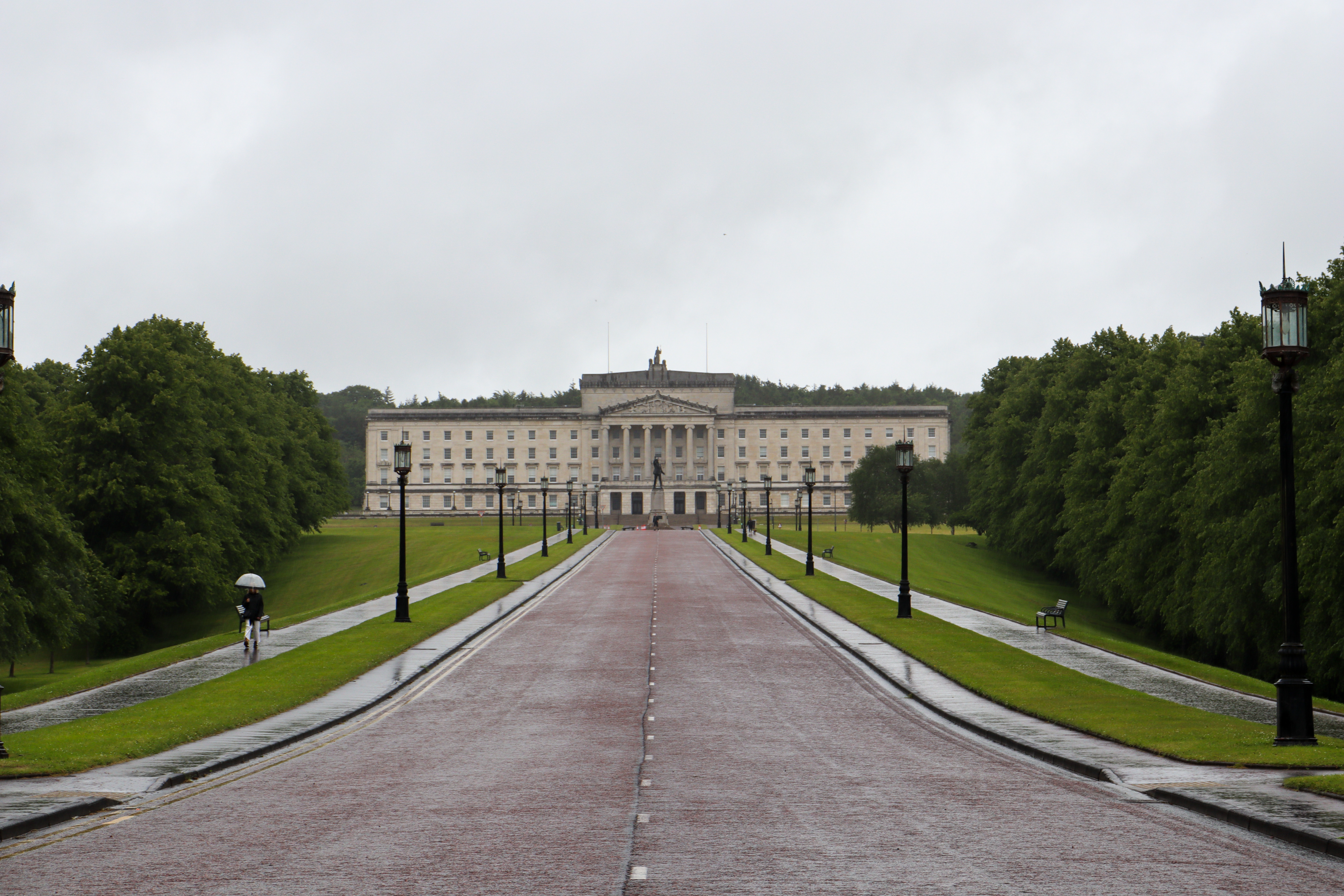
It felt ironic that a place which, even in the last couple of years, has known turmoil and disagreement, could be so peaceful! The whole place is beautifully maintained, with lovely walking routes, a huge enclosed dog field and some really good facilities, including a Changing Places toilet.
Titanic
Monday 10 June
In August 2005, we did a trans-Atlantic cruise on the Queen Mary 2 from Southampton to New York. It was an amazing experience! It inspired an interest for me in the Titanic. I am fascinated by the Titanic story and by the lives of those on board.
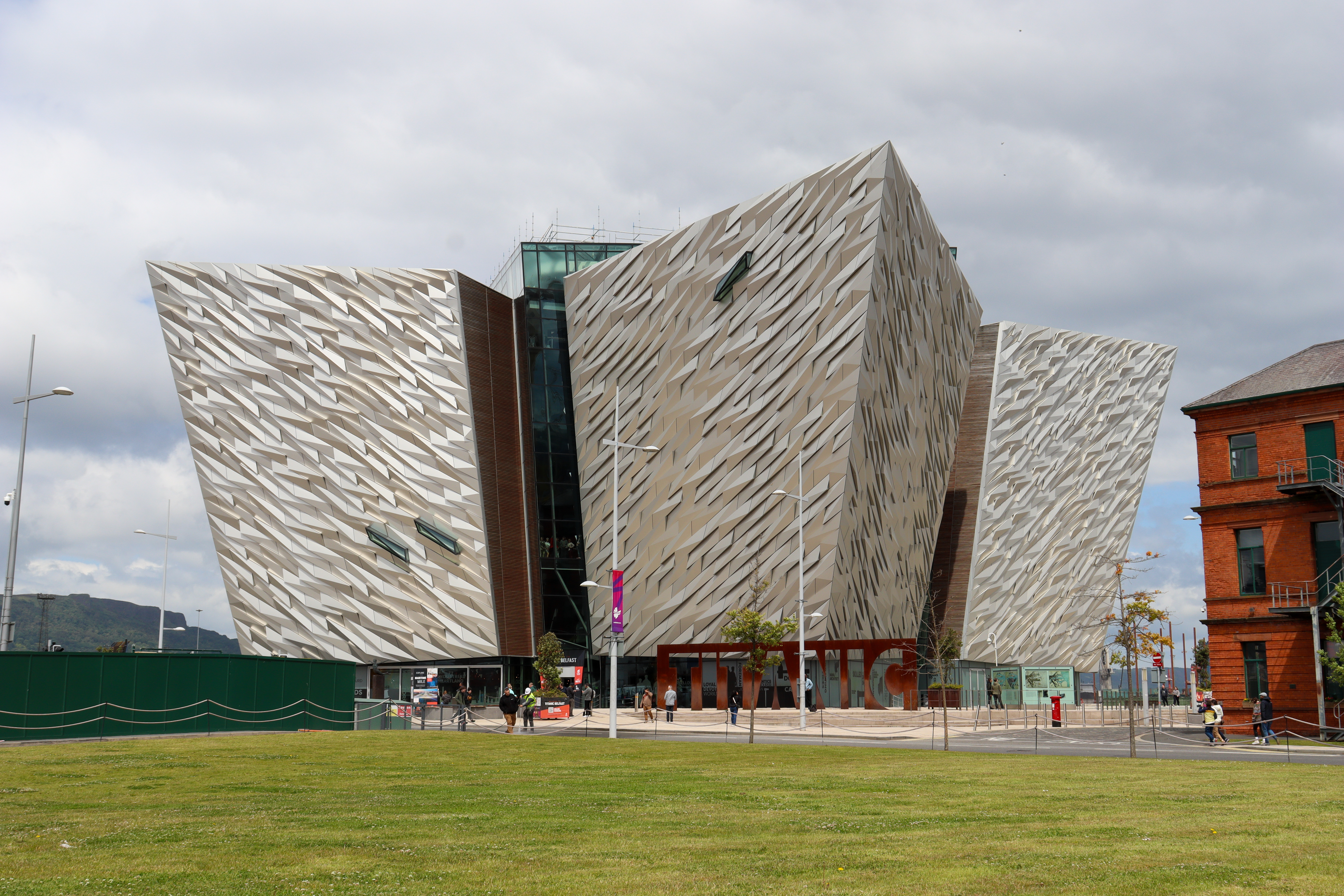
The Titanic museum is an amazing visit! We learned about the history of Belfast and how it became a ship building giant. We learned about the Titanic itself, how it was built and the events that led to its doom. There were also several very moving galleries that told real life stories of those on board and then a list of all the people on board, those that survived and those that perished. On this board, stats were posted that were just awful!
This is where my theme of inequality began to show:
- Of 2225 people on board, 1512 died. Only 32% in total survived.
- Of 12 dogs on board, 3 were saved. That's 25% of the dogs that were saved.
- Of 1690 men on board, 20% were saved.
- Of 709 third class passengers, 25% were saved.
- Of 144 women in first class, 97% were saved.
- There was only one black man on board. He died.
- 51% of the children on board were saved.
It got me thinking about the value we place on people's lives. If this happened today, how would we decide who to prioritise? Why were women given priority? Is it because they were more valuable or is it because they were perceived as weak?
Clearly, the rich were prioritised above the poor. It's striking that in percentage terms, being a third class passenger and being a dog gave you equal chances of survival. I presume the low number of children saved was more related to social status too. I think there were proportionately more children in third class than in first class.
Regardless of the way lives were valued, what is clear is that the event shocked the world. In the same way as large scale disasters are analysed today and procedures changed to prevent reoccurrences, the same happened with Titanic.
One of the facts that hit Neil hardest was that there was another ship, The Californian, only 19 miles away, that could have come to the rescue much quicker than SS Carpathia did. The signal operator had gone to bed, so they didn't hear the SOS distress calls. Now, it is a requirement that there is a signal operator on duty 24/7, so that distress calls never go unheard again.
The Troubles walking tour
Tuesday 11 June
In the months running up to this holiday, I've been learning about The Troubles, what led up to them, how they played out, and how a fragile peace has been created. The Falls, Shankill Road and the peace walls are now familiar terms to me, but I want to explore these places myself. So I've bought a self-guided walking tour, via an app on my phone. It comes with loads of audio and video content, and a map to follow.
We began our walking tour at Divis Tower, a 20-storey, 1960s tower block which was in the area where fighting first started in August 1969. Several people were killed, including a 9 year old child called Patrick Rooney, who was killed by a police bullet that pierced the wall of his flat. Another man was killed on a balcony, trying to help someone who was injured.
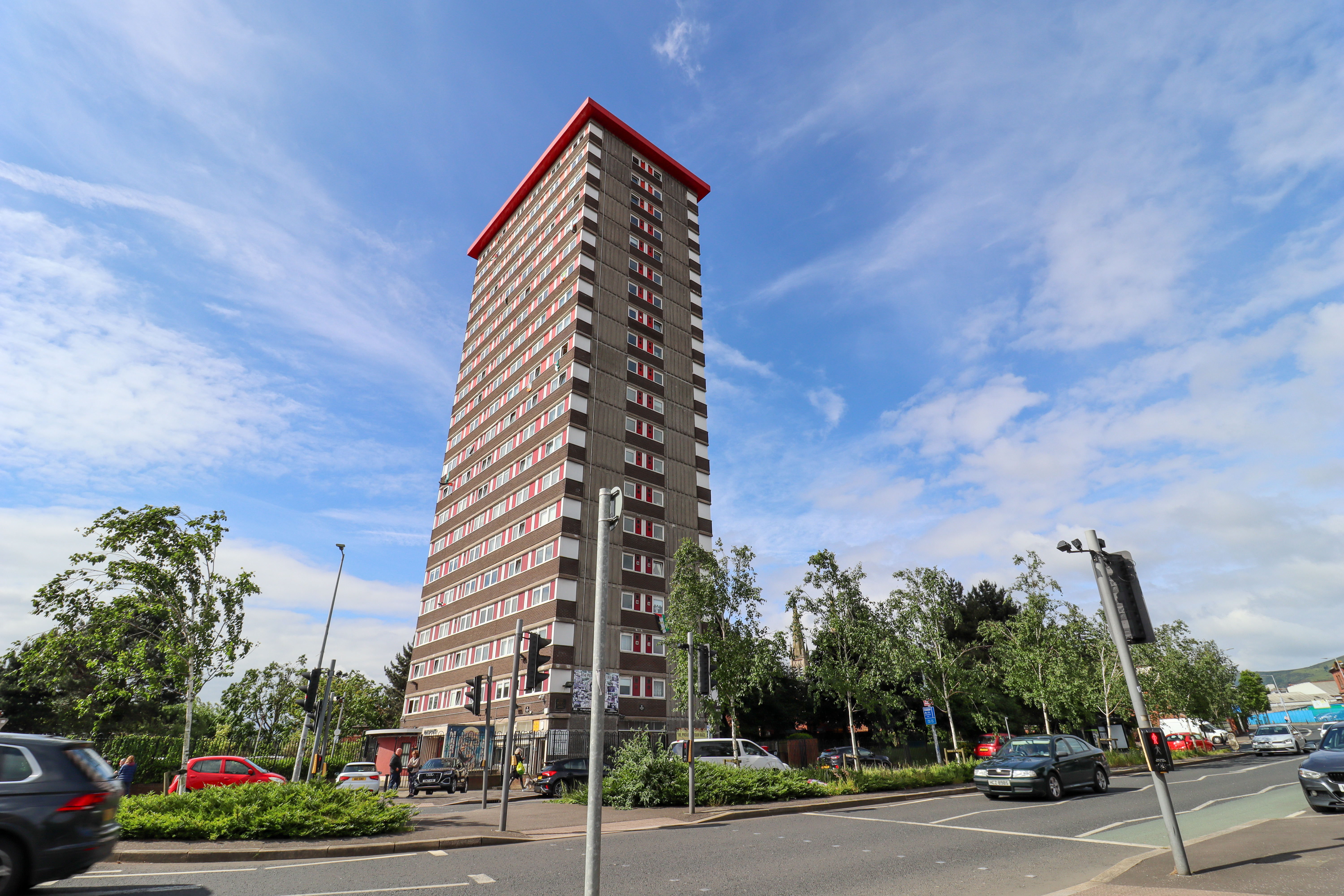
From Divis Tower, we walked down Divis Street and past the International Wall, which is covered with amazing murals. These focus on other areas of the world that have known similar segregation type conflicts, such as South Africa and Israel/Palestine.
We then continued onto the Falls Road, in the Republican area, where most people are Catholic. There are many murals that tell the story and express some of the fear and anger that is felt here. On the gable end of Sinn Fein's offices is a beautiful mural of MP Bobby Sands. He was a non-violent IRA member, the first to use hunger strike as a method of protest. He died at the age of 27, after 66 days on hunger strike.
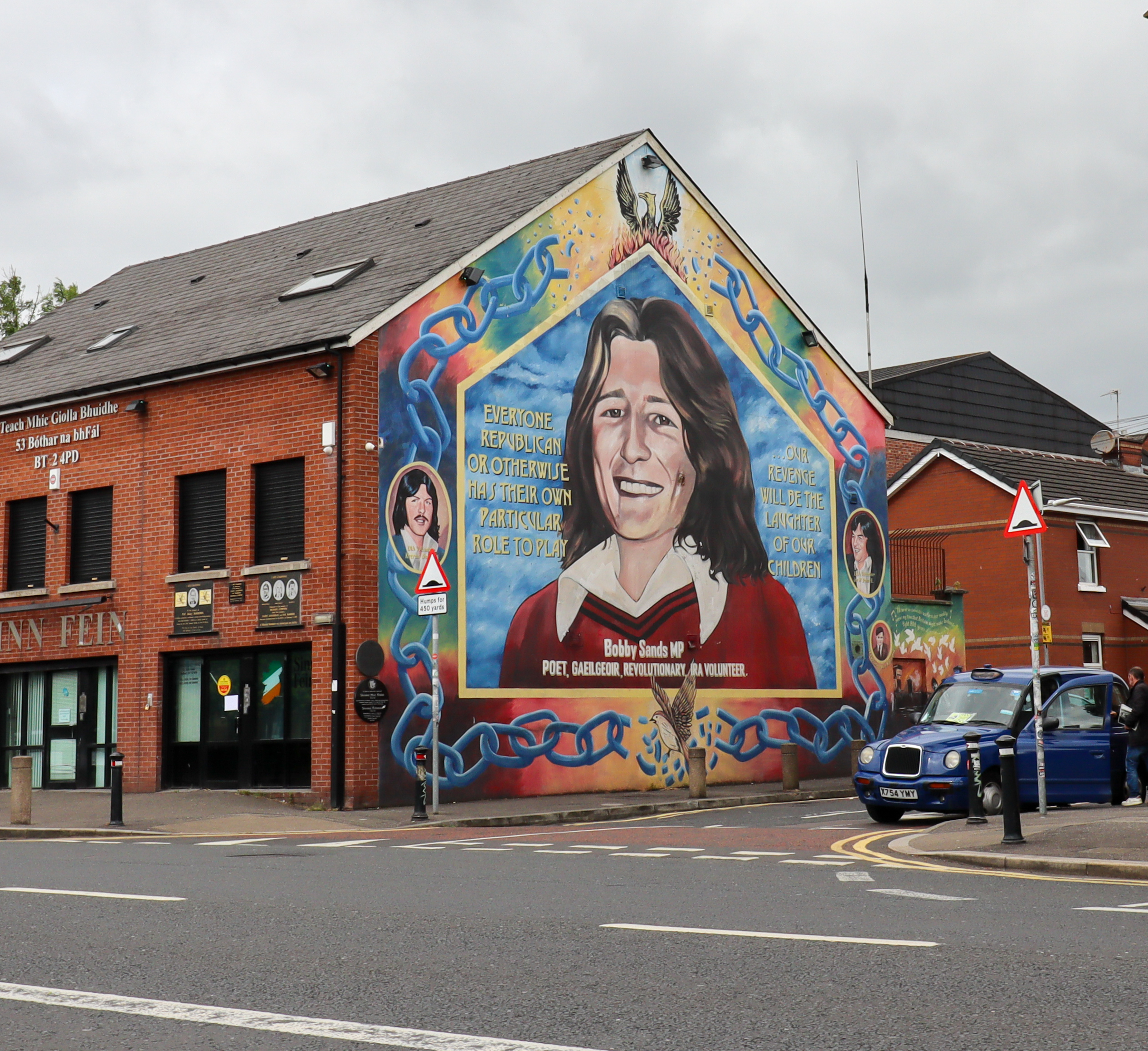
We passed Clonard Monastery, frequently a place of refuge. Father Alec Reid, a priest there, was instrumental in facilitating peace talks between John Hume and Gerry Adams. Throughout the tour, there were stories of individuals who helped others, despite their differences and of those who strived for peace.
Passing from the Republican area to the Loyalist area, you have to go through security gates. During the day, these are open and people and cars can drive through. At night though, they are locked and the two communities remain segregated. There are also enormous peacewalls that separate the two communities. The most striking of these run the length of Cupar Way. They are 25 feet high and really give the feeling of being in a war zone. The bottom section though is covered in colourful graffiti, with messages of peace and hope from millions of well-wishers.
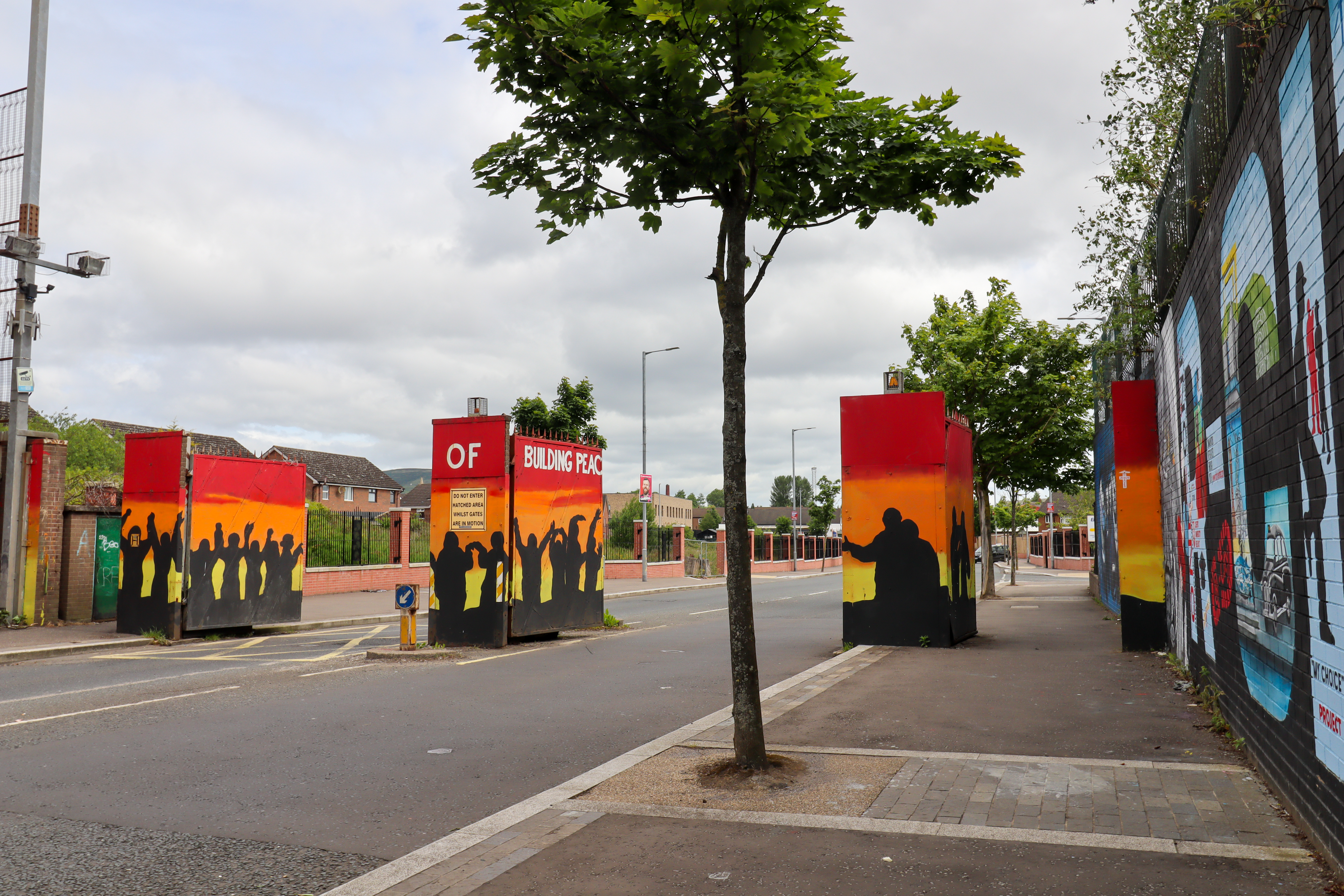
In the Loyalist area, the main street is Shankill Road. The murals continue but the theme is completely reversed, with huge images of the British Monarchy, messages about being loyal to the crown and to the UK, and shops selling all kinds of Union Flag branded merchandise.
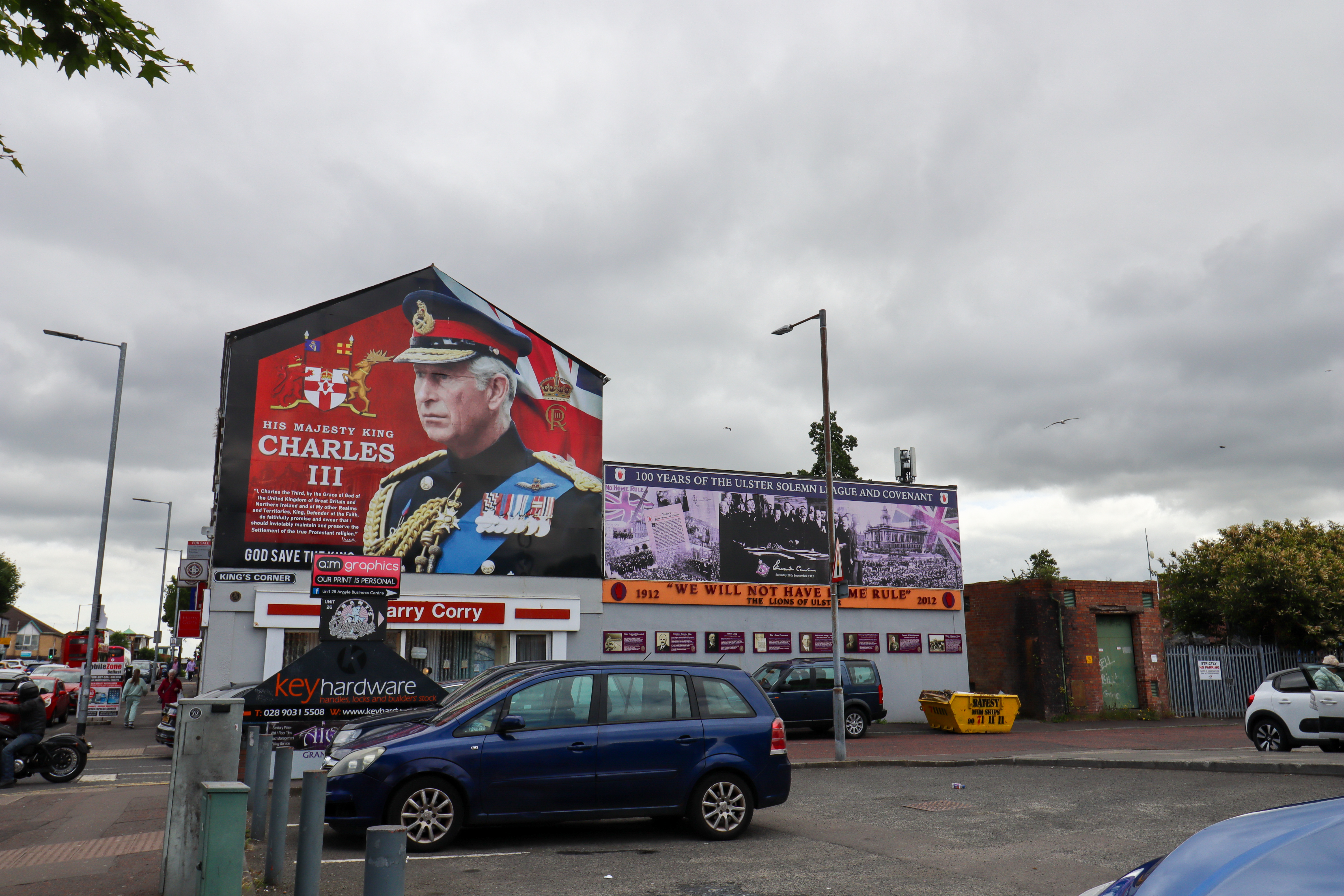
A personal note of irony. The Republican area was very wheelchair friendly, with plenty of dropped kerbs, reasonably good pavements and it was easy to get around and cross roads. As we moved onto Cupar Way and into the Loyalist area, it became increasingly difficult for me. Many roads did not have dropped kerbs and I had to travel long distances in the road with traffic passing me. The irony here is that those who experienced discrimination and where, in theory, I don't belong, seem to have created a non-discriminatory environment (for me, at least). By contrast, the place where I should have felt more at home, was difficult and felt like it was full of barriers.
We finished our day with a visit to Crumlin Road Gaol, a notorious Victorian prison, which was also used during the Troubles. This wasn't completely accessible because it has many very narrow doorways but I was able to do most of the 'experience' and found it very interesting.
Enniskillen
Wednesday 12 June
I have no strong plans for our day in Enniskillen. There are a couple of castles that look appealing but I think we may just need a less structured day to relax and ponder what we have done so far. So anything we do and see in Enniskillen will be a bonus.
The theme of inequality began as soon as we arrived in Enniskillen. After trying many car parks, it became clear that motorhomes are not welcome. We ended up driving round until we found street parking and parked in a resident/timed bay for the day. I always feel really bad, doing this because that is someone's home and now they can't park but we weren't left with many options.
Enniskillin Castle
Our visit to the castle and museums was pleasant. The focus is more on the long-term history of the area, the geography, culture and industry. This was quite a welcome change, after the emotional visits of the previous few days.
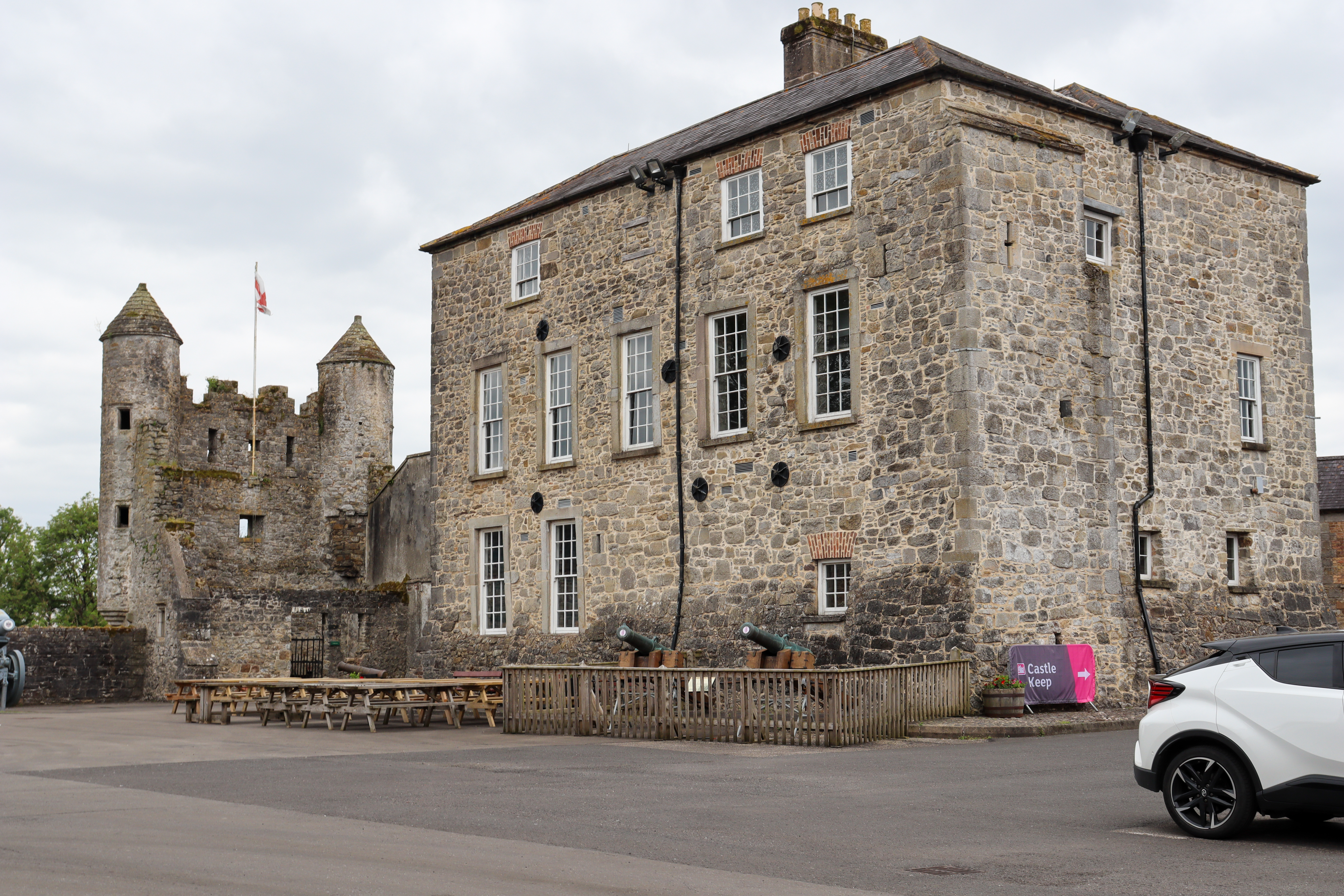
Like most castles, we knew it wouldn't be completely accessible but we were ready to do what was possible and not stress about the rest. There was one thing though, that baffled me.
Most tourist attractions charge full price for disabled people but allow a carer or companion to go for free. This is because the carer is needed to enable and help with the visit. We've always found that really helpful. At the castle and museum though, you have to apply, in advance, for a PASS card, to get the free carer ticket. So I did. I applied in early April, chased it in late May and again, the week before our holiday. They posted my card the day before we left. I told them that wouldn't get to us in time. They didn't seem to understand the concept of a holiday being more than one day. In the end, they produced a second PASS card, which we collected from the museum. So all was well. But economically, what a waste of money! The cards are made from plastic, like a credit card... an envelope, postage, time. These cards cost. The entry price was £5.80. Surely, it would be more cost effective to ask for PIP evidence, a blue badge or just take my word for it, like most other places do???
Island town
I hadn't really appreciated this until we arrived, but Enniskillen is an island. It sits in the middle of Loch Erne and has bridges on all routes in. It was really quite pretty! There is a waterside path, that runs around the island and we walked a fair stretch of it. The town centre is quite hilly, so this walk was a good way to avoid the hills.
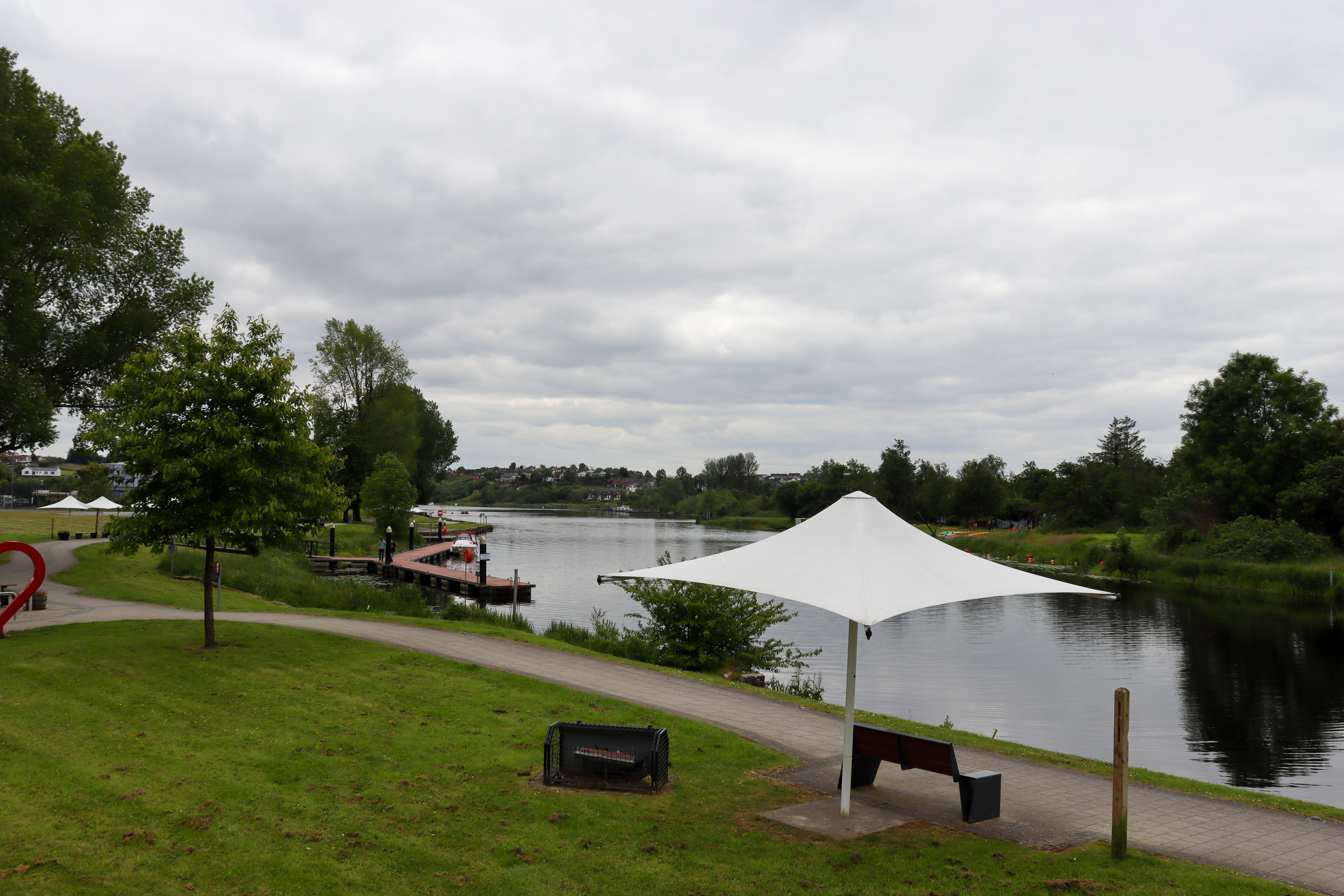
Derry
Thursday 13 June
I suspect we could have easily spent a few days in Derry... or Londonderry, whichever you prefer to call it. Like Belfast, Derry was a divided city, with Republicans in some parts and Unionists in others. Now, Derry is filled with symbols of peace and I think there may be much to learn here.
There is always one day (at least) in every holiday that conspires against us. This was the one. The weather was abysmal! Parking was easy, compared to the day before. We parked, along with other motorhomes in the Foyle Valley Railway car park, and it was only about 50p an hour, so not bad! The combination though, of torrential rain and a very hilly city, made the day quite difficult!
St Columb's Cathedral
Like most cathedrals, this one was at the highest point of the city. The paths weren't great and there was a distinct lack of dropped kerbs. My hands, gloves and pushrims were soaked, so I had very little grip. However, with a bit of team work, we eventually swam into the cathedral, where they were very eager to welcome us.
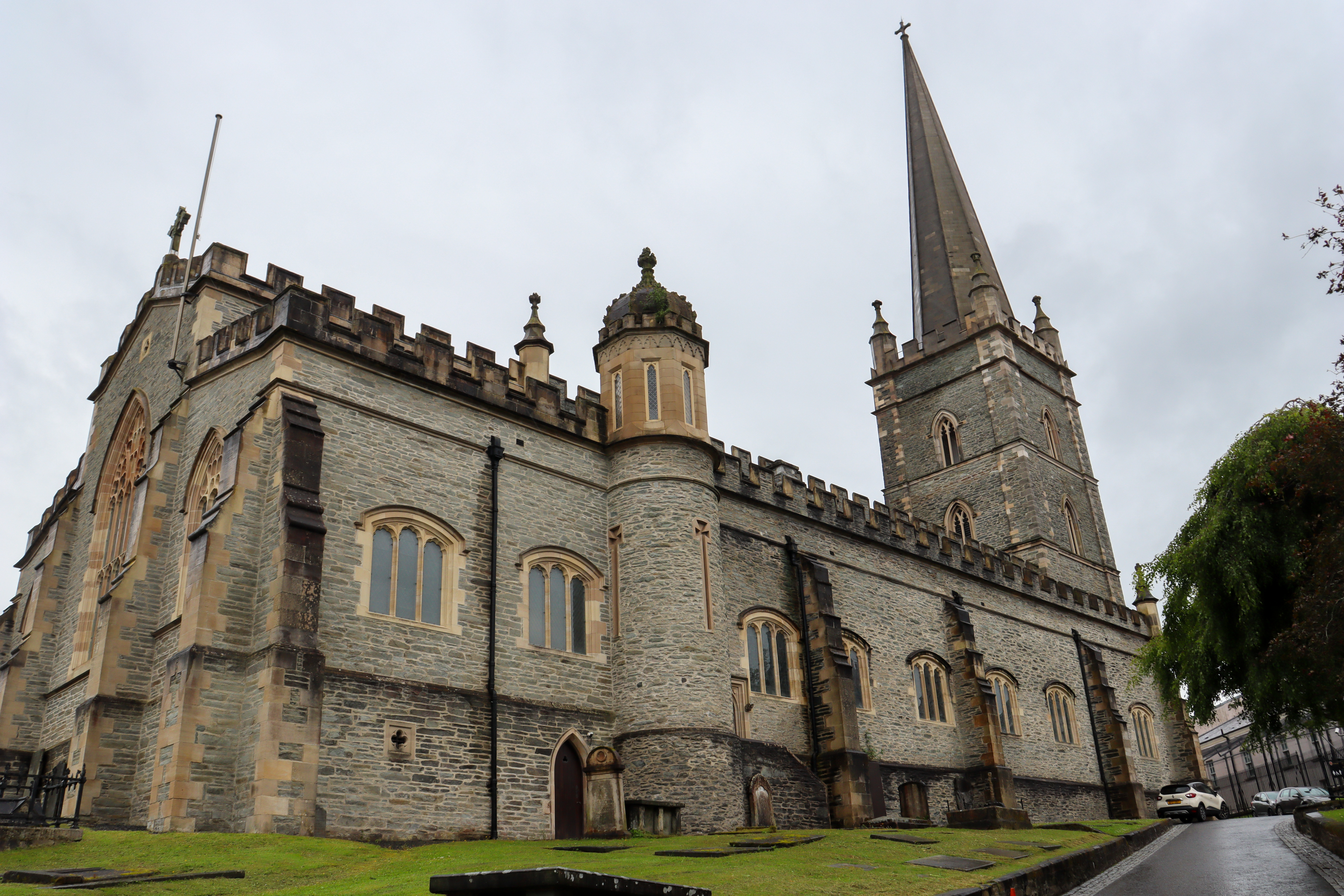
St Columb's Cathedral is the first protestant cathedral to have been built in Ireland or even in Britain. It now plays a significant role in building bridges between the different communities in the city. For us, it played a significant role in drying off!
From the cathedral, we had planned to walk to the Museum of Free Derry, but in trying to get there, we got sidetracked onto the city walls and ended up not getting to the museum at all.
Lunch
With it being such a wet day, we were keen to find somewhere nice for lunch. I'll be honest, we were tired and feeling a little uninspired by lunchtime. Then, by sheer good luck, we stumbled upon Cafe Central ![]() .
.
This cafe was so accessible! It was easy to move around, the toilet was clean and well laid out, the tables were spaced well, it was just what we needed. The menu didn't initially inspire me but we eventually decided to have a cooked meal and it was really delicious! The staff were lovely. It gave us a much needed opportunity to just relax, dry out and refuel.
Derry Girls Mural
In planning this trip, I heard about the Netflix programme, Derry Girls, and decided to watch an episode or two. I was immediately hooked! It is so funny, whilst still showing elements of the conflict and the cultural differences between the catholic and protestant communities.
On our way to visit the peace symbols, we took a little detour to have a look at the Derry Girls mural, and for the first time, it hit me that the whole gender thing of one boy in a girl's school was really funny.

Symbols of Peace
I was really looking forward to seeing the Peace Flame and crossing the Peace Bridge but by the time we got to them, the weather was throwing another tantrum and our parking ticket was running low on time. So we did go and look at the Peace Flame and we passed the Peace Bridge but didn't cross it. We will go back another time, hopefully with better weather and do all the stuff we didn't get to do.
The Causeway Coast
Friday 14 June
Whenever we venture off to a new place, I get a flurry of people telling me that I won't be able to manage at least one of the venues. For this holiday, it's our last day. Beaches and rocks are notoriously difficult to access in a wheelchair but I am really hoping that the Giant's Causeway will be manageable. Like everything I do, I will aim to enjoy what I can do and accept what I can't. If I can just be in the moment and get some good photos, I'll be happy.
Giant's Causeway
Another example of excellent accessibility and welcoming motorhomes! Our arrival was very easy. We had booked so we showed our ticket and were directed to the top end of the car park, where motorhomes could park. Everything from the car park to the visitor centre was completely accessible and even the road to the causeway was a proper road and pavement. They have done so well!
So we made our way down this really steep road, stopping to take in the views and to just enjoy being in the moment.
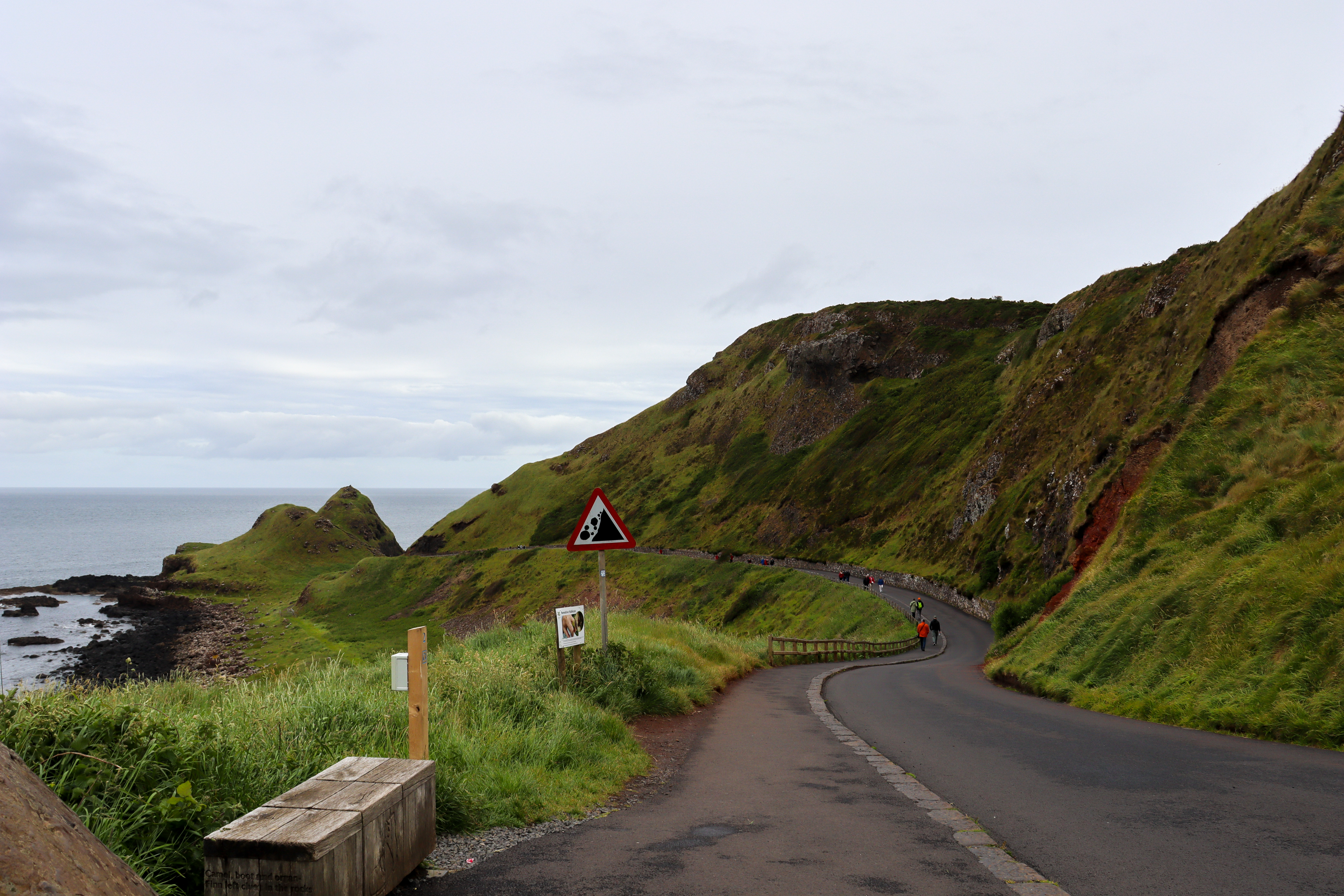
The one thing I hadn't really thought about was how busy it would be, so we were really glad we had booked the first time slot! Even then, it was heaving! There were school parties, groups of foreign tourists, and lots of individuals like us. That was the first time it really dawned on me that this is a seriously important and interesting place. People travel from all over the world to be here.
The stones that make up the causeway are geometrically pleasing. There is the legend of Finn McCool, the giant that gives his name to the place and then there is the more accurate scientific explanation of how these hexagonal columns came to be. For me, whilst the story is fun, the scientific explanation is of more interest but within that, I still see the hand of God in the creation of them. It is so beautiful and the patterns filled me with awe.
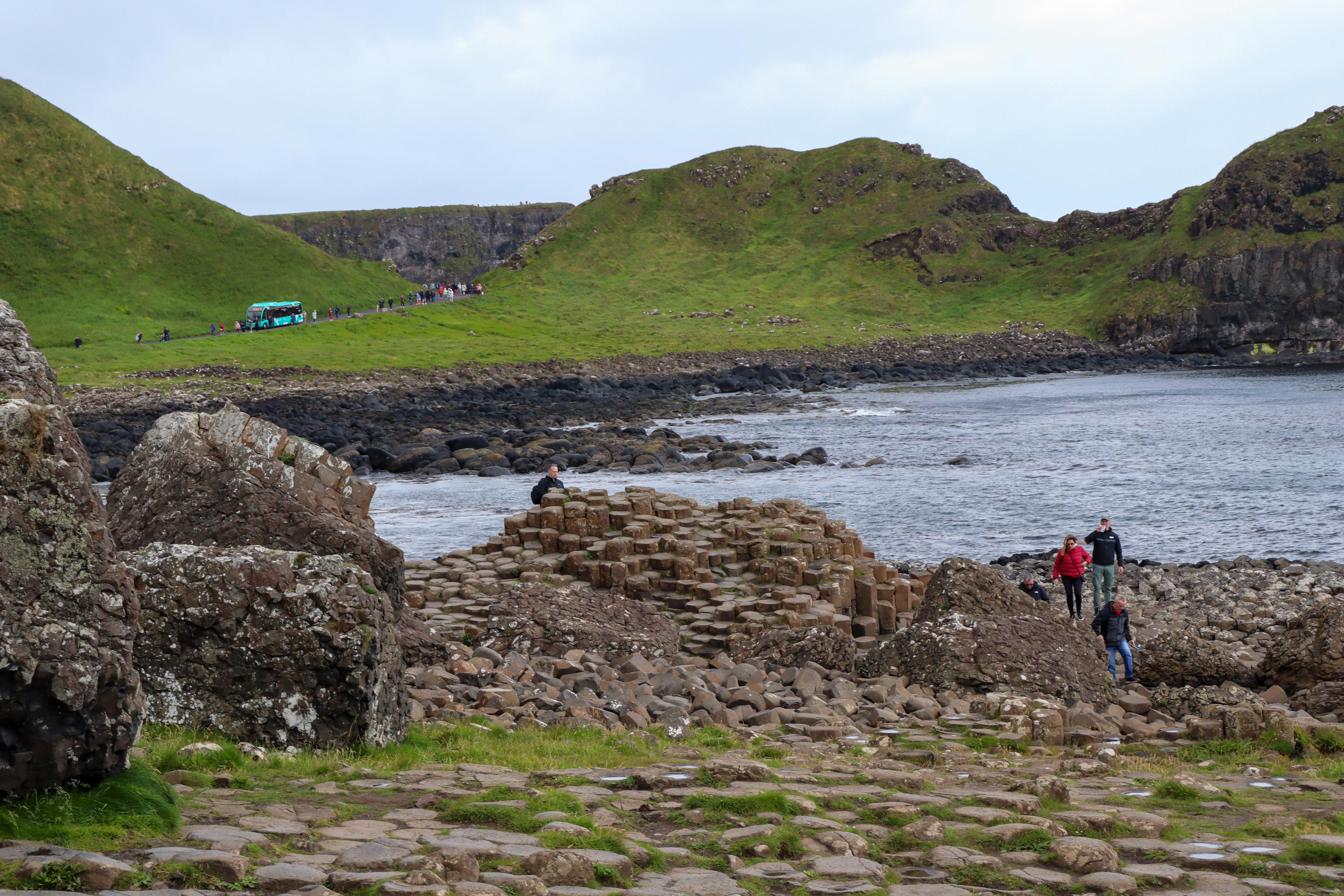
In the photo above, Neil is just peeking up behind the rocks. He went for a good walk over them, whilst I stayed on solid ground and just soaked up the atmosphere and took loads of photos. You may also have noticed a bus in the background. That was really helpful! Instead of walking back up that very steep hill, we got on the bus and took a ride. That made the day more enjoyable, as I had energy to do other stuff later on.
Summary of the week
It's hard to sum up this holiday. We could have easily spent two or three weeks touring Northern Ireland and still have filled every day. It is a truly beautiful country! We especially loved the north-east coast, which we drove after our Giant's Causeway visit. We definitely want to return.
In terms of my thoughts about the Troubles, there was evidence in many places that people have moved on and are embracing peace. However, there were also indications that this peace is still new and fragile. Whilst the majority are really prepared to fight for peace, in a non-violent sense of the word, exercising forgiveness and building bridges between fractured communities, there are still those that are angry and there are certainly unresolved issues. The continuing existence of the peacewalls and security gates was a stark reminder that there is still a long way to go.
